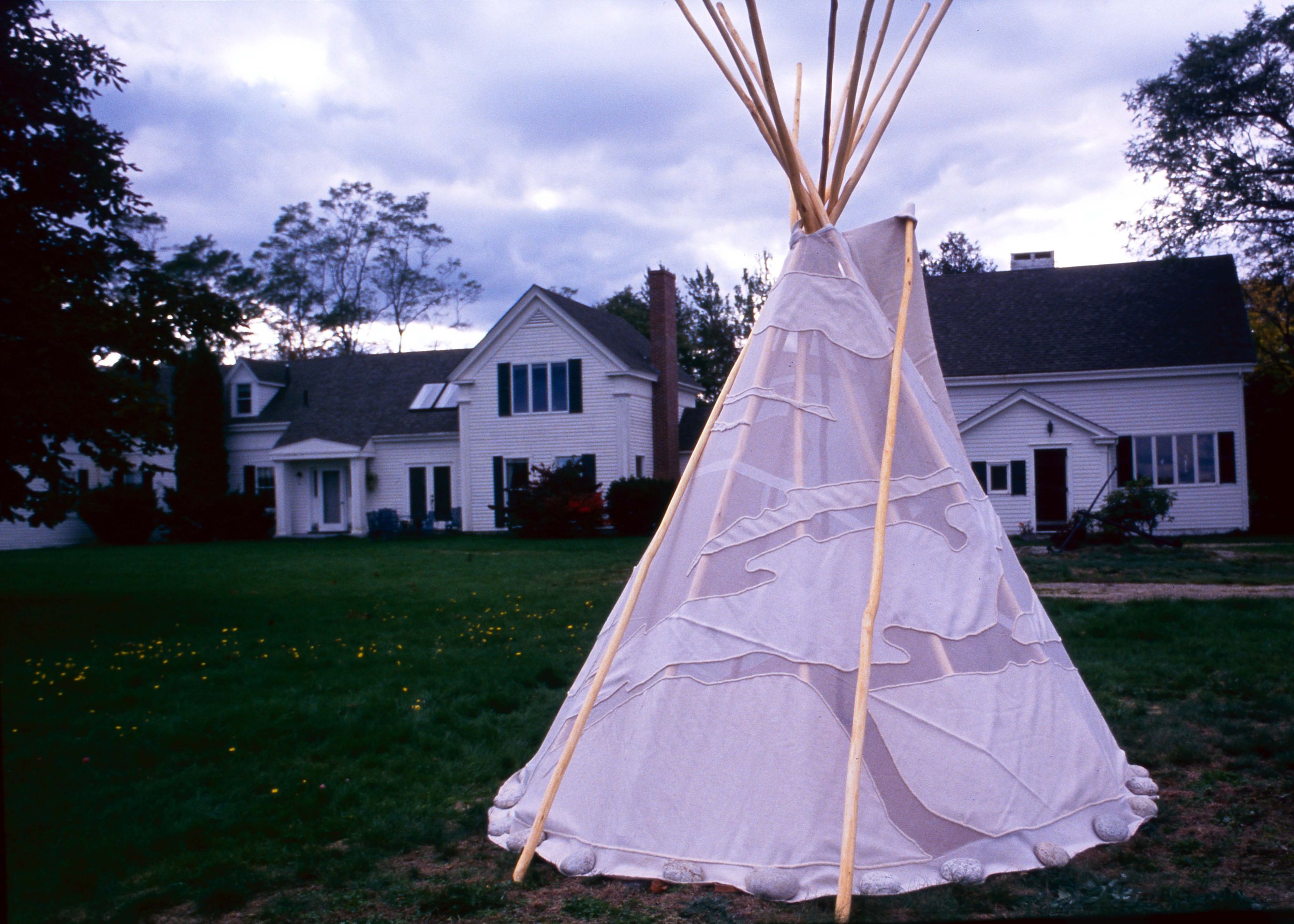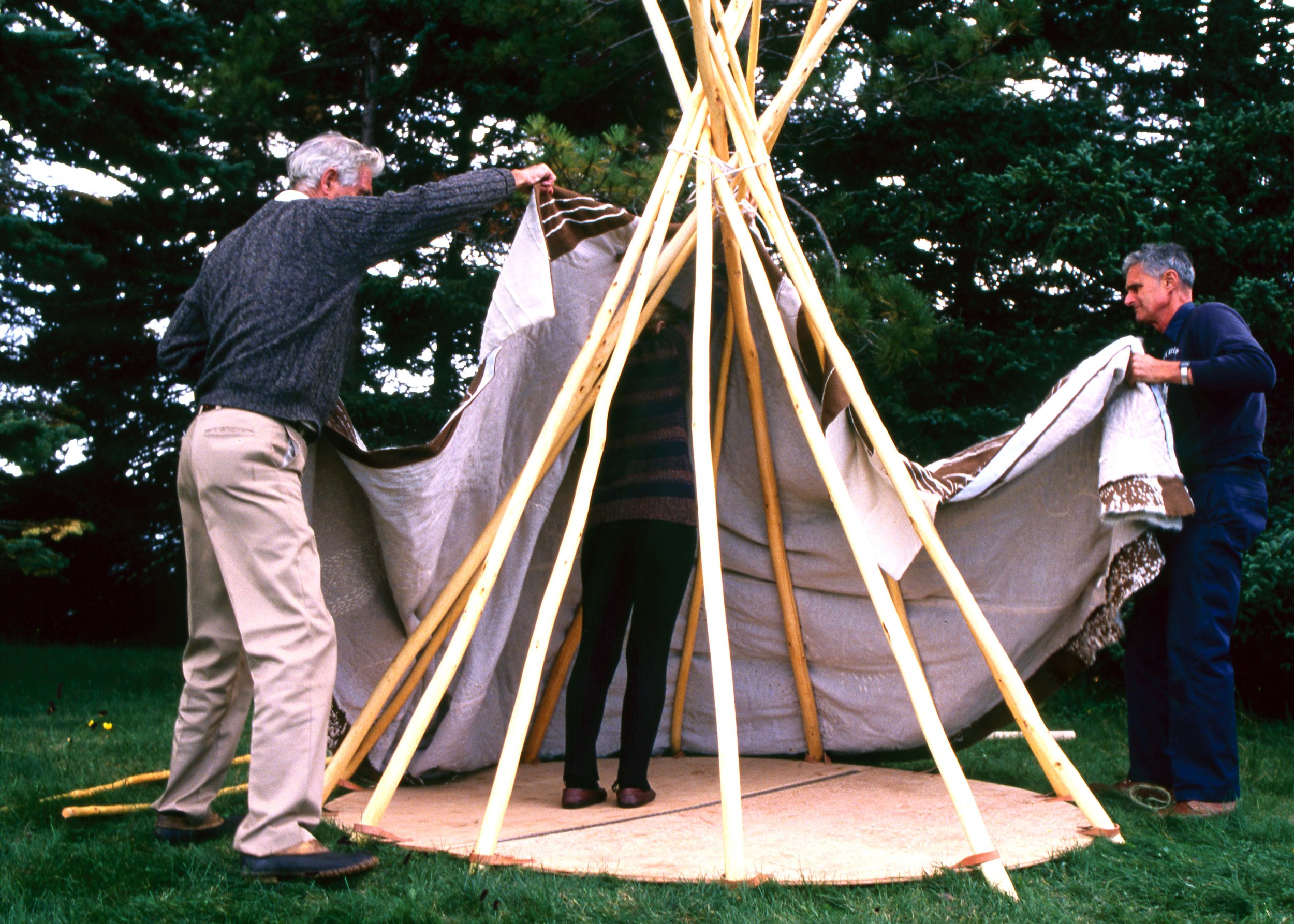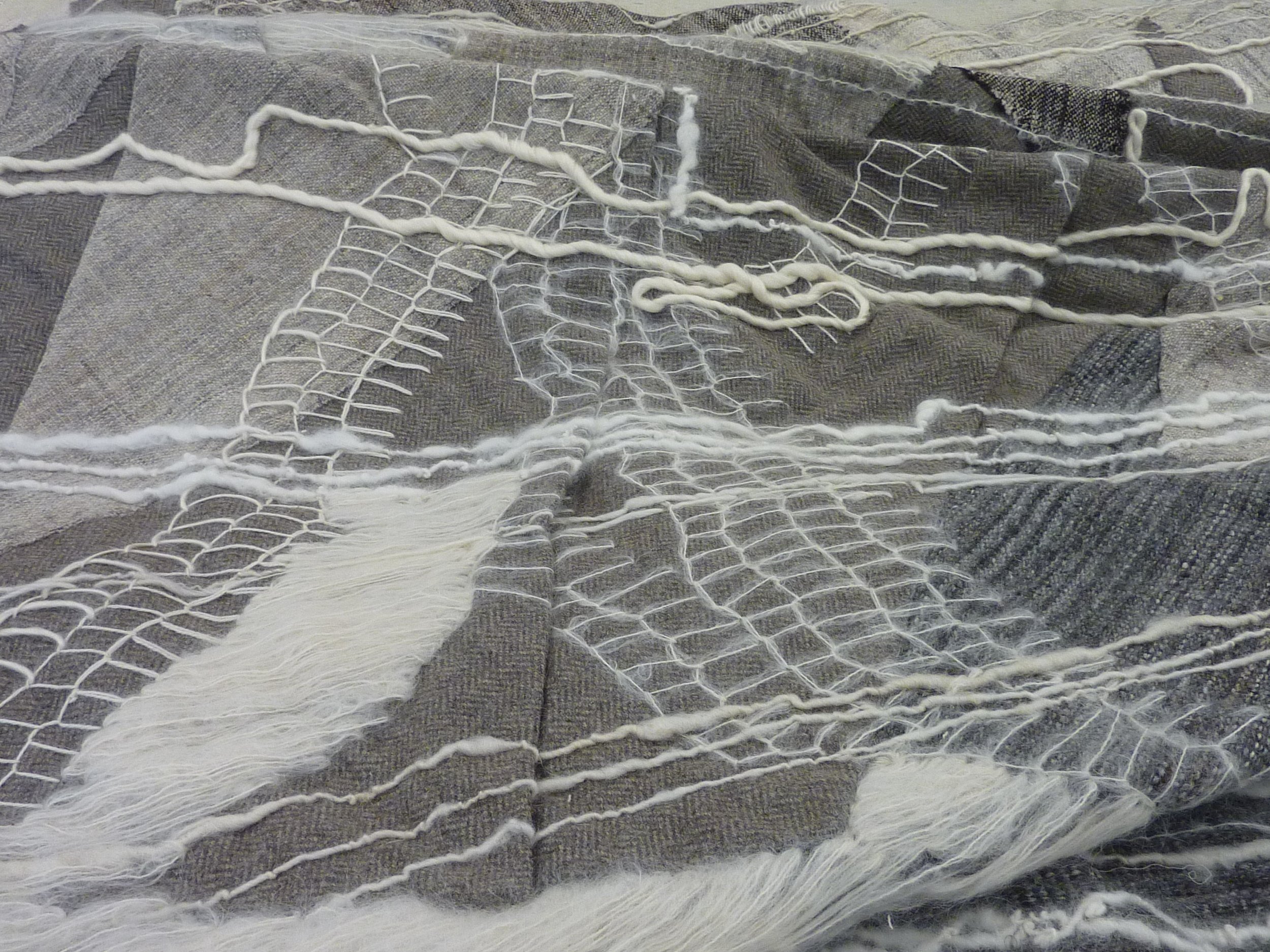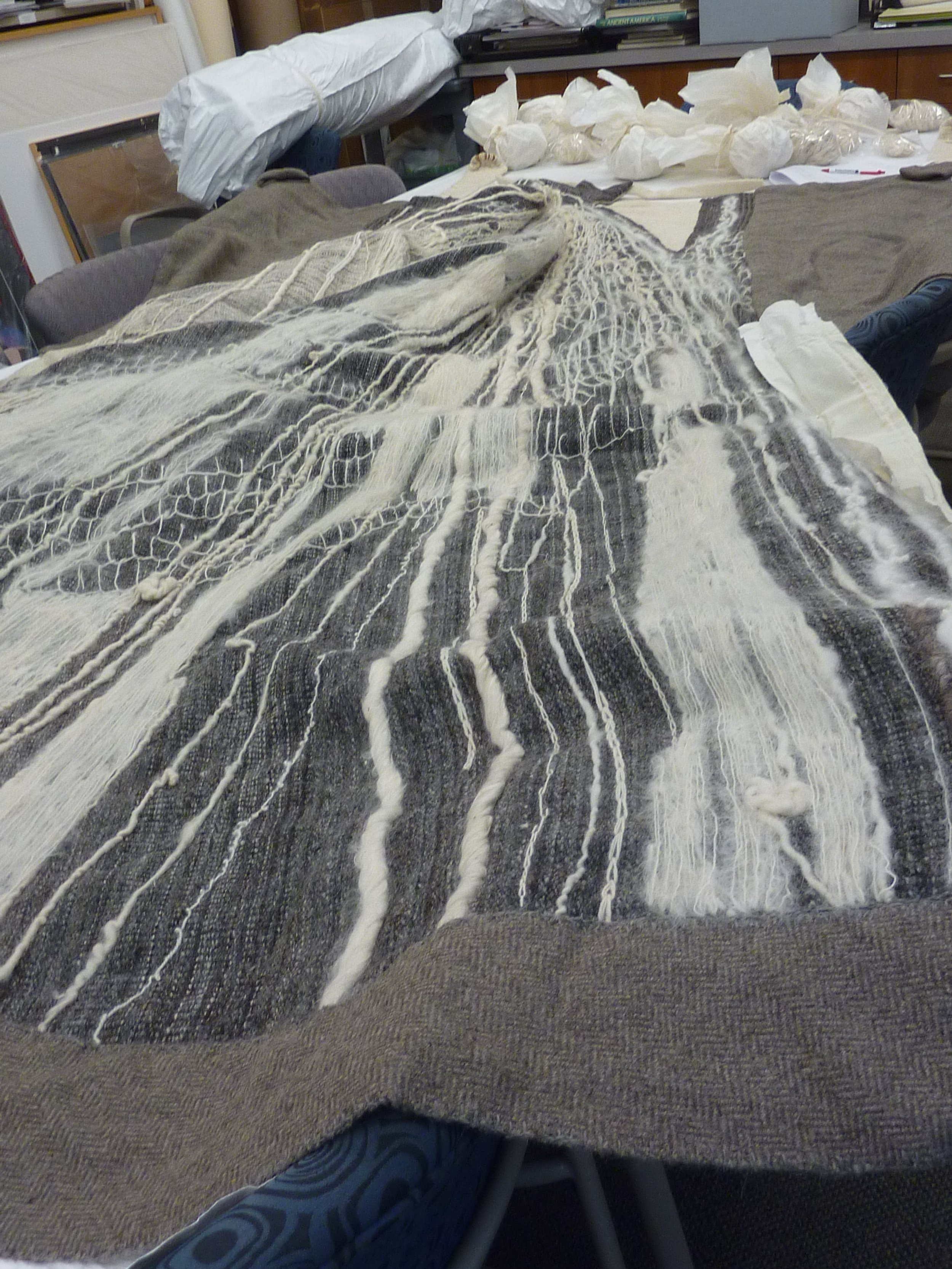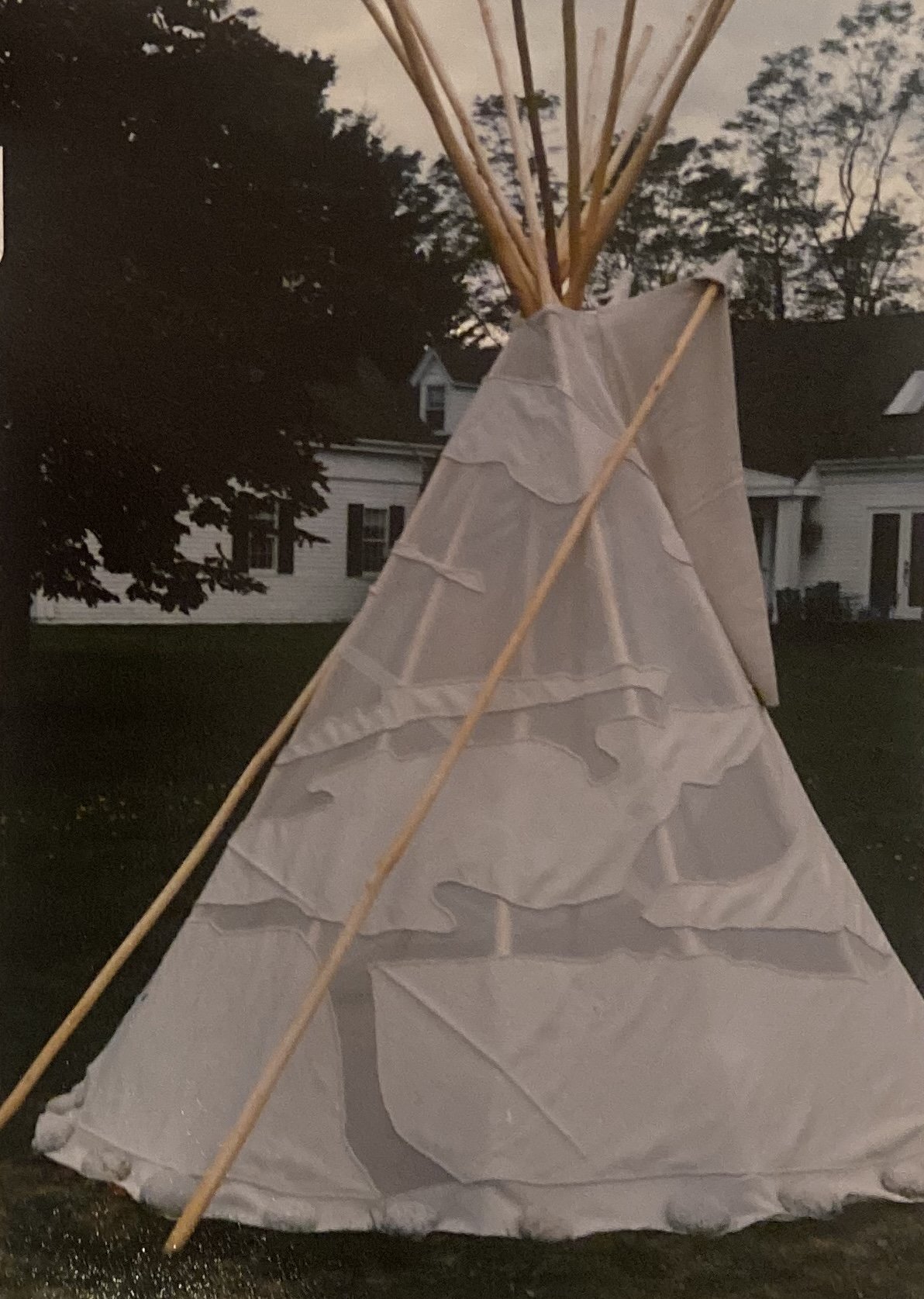Tipi Waterfall, Tipi Blizzard, Tipi Cloud
In her final evolution of fiber artistry, Hemenway expanded her repertoire of fiber art by pulling tapestry off the wall and inviting the viewer to experience fiber art in three-dimensional space. Crafted for an international exhibition in Beijing, Hemenway’s Tipis sought to honor and elevate one of the most iconic American structures—the American Indian Tipi. An embrace of the traditions and practices of Native and indigenous Americans by Hemenway became the foundation upon which she created an enduring legacy of spatially aware fiber art.
Three dimensionality of fiber art, though rare in Hemenway’s time, was made accessible to Hemenway through the study and understanding of tipi structures of Native and indigenous Americans. Hemenway was inspired by the conical skin- or canvas-covered dwellings of Plains Indians and endorsed this structure as an ideal incarnation of a portable fiber-centric sculpture. Upon each of her three tipi pastiches, Hemenway assumes an artistic canvas which represents a technical exploration of water in its natural forms.
In Cloud Tipi, billowy sheer white fabric adorns the exterior of the structure, allowing for a diffused peak into the pole construction of its support. The work evokes the often-oscillating density, opacity, and thickness of a cloud.
In Blizzard Tipi, chaos and movement are brought to the fore to reinforce the frigid swirling terror of a winter storm. Winter, typically known by its deafening quiet and stillness, gets reinvigorated by the reminder of a blizzard's show of force.
In Waterfall Tipi, wild and untamable movement of falling water is captured by the inexorably mobile construction of fabric and fiber, evoking a sense of unknowing motion in the sculpture. Though it can be beautifully peaceful, large amounts of water in motion can wield great power. Waterfall Tipi centers this dissonance.
In each of the three Tipis, Hemenway challenges notions of the docile and delicate by demonstrating the capability of fiber to become present in the three-dimensional world typically dominated by hard sculpture. Soft, fiber sculpture embodied by the three Tipis has been cemented by Hemenway as a reputable form of fiber art.




